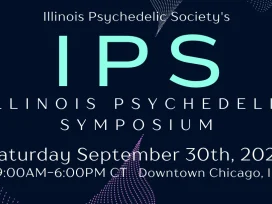
Blog

From the lab to the club, from the club to the clinic and beyond, Ketamine and MDMA have walked similar paths on their way to becoming two of the most innovative and promising treatments for mental health challenges today.
Moreover, both ketamine and MDMA are atypical psychedelics–meaning they work on the brain in slightly different ways than the “classic psychedelic” medicines like LSD, peyote, and psilocybin. Despite their similarities however, the two are unique medicines with key differences in the way they are each used in therapeutic settings. Let’s explore.
Despite their similarities however, the two are unique medicines with key differences in the way they are each used in therapeutic settings. Let’s explore.
How is Ketamine-Assisted Therapy different from MDMA-Assisted Therapy?
Ketamine and MDMA are fundamentally different drugs
MDMA is associated with increases in the neurotransmitters serotonin and oxytocin. When compared to classic psychedelics, however, MDMA does not seem to have as strong of an effect on specific serotonin receptors. MDMA has also been compared to the stimulant ephedrine for its similar effects on the body, specifically on smooth muscles and blood sugar. Ultimately, MDMA’s reputation for increasing emotional connection with others and inspiring action have earned it the title as an entactogenic and empathogenic compound.
Ketamine, on the other hand, was originally developed as an anesthetic in 1962. It functions mostly on GABA and glutamate levels and produces a dissociative effect in addition to its psychedelic properties. As such, many refer to ketamine as a dissociative anesthetic.
Ketamine and MDMA have separate legal histories
MDMA was originally developed by Merck laboratories in 1912. Due to initial disinterest in the compound, it was not until later that it began to be used in psychotherapy. This was unfortunately halted as various countries banned its use in the 1970s and 80s. Currently, MDMA is generally only legally accessible in research settings.
Because ketamine continues to be used in operating rooms, emergency departments, and in other settings as an anesthetic, there were no legal barriers to accessing the medicine when its mental health benefits were identified in the early 2010s.
Ketamine and MDMA are taken in different ways
Ketamine can be administered in a number of different ways such as IM injection, IV infusion, intranasally, and orally. MDMA has traditionally been consumed orally.
Ketamine- and MDMA-assisted therapies have distinct formats
Another key difference between Ketamine and MDMA in a health center is how the therapy is structured. Researchers investigating MDMA’s potential as a pharmaceutical intervention for mental health have had to be particularly cautious when developing treatment protocols; this has led to a model of therapy which is commonly criticized as not being sustainable outside of research settings. For example, MDMA-assisted psychotherapy typically involves two therapists per client for the entirety of the client’s journey–a level of care which would likely prove quite expensive in other contexts. Furthermore, most clinical trial participants receive a total of three 8-hour MDMA sessions with nine 90-minute integration sessions.
Ketamine-assisted psychotherapy is also commonly administered as a series: at our health center, this looks like up to six initial ketamine sessions in clinic and four to six integrations in clinic or virtually. However, treatment typically involves just one therapist who may or may not sit in the room for the entire journey. The in clinic ketamine journeys are also considerably shorter, averaging about 40 minutes of psychedelic experience or 2 hours of clinic time each visit. Additionally, some of our ketamine clinics offer group therapy where one or two therapists attend to the journeys of multiple clients who are receiving ketamine in clinic at the same time. In this format, the group members get to prepare and integrate together, thus giving members an opportunity to hear multiple perspectives and insights.
What can I expect from both Ketamine-Assisted Therapy and MDMA-Assisted therapy?
Both Ketamine and MDMA are psychedelic medicines
Ketamine and MDMA can both elicit a range of psychological experiences beyond the sensory experiences psychedelics are known for. For example, either ketamine or MDMA may lead a person to feel connected to oneself and others, warmth, an increased awareness of emotional states, the processing of trauma, and/or an altered perception in time to name a few.
Both offer mental health benefits
Research from six clinical trials showed that MDMA is safe and effective at relieving the symptoms of PTSD, with 54% of participants showing complete remission from the disorder by the end of the study. Similarly, a chronic PTSD study with ketamine found 67% of participants experienced a reduction in symptoms. In addition to trauma, Ketamine has also been studied to treat depression, anxiety, and suicidality among other conditions.
Like all medicines, both Ketamine and MDMA have potential side effects
Possible side effects for ketamine can include nausea, dizziness, and a headache. Prominent side effects of MDMA include: muscle tightness, decreased appetite, sweating, feeling cold, feeling restless, and dilated pupils. Both medicines have the potential to temporarily raise heart rate and blood pressure.
In Conclusion
Whether you find yourself in an MDMA clinical trial or working with a provider offering ketamine-assisted psychotherapy, you are stepping onto a path with a rich history and much to offer in terms of healing. May you enjoy the journey!
Willow & Leaf does not endorse the use of substances that are not yet legalized.
About the Author

Jordan Dobrowski (she/they) is an LGBTQ-identified therapist with extensive experience supporting individuals from diverse cultural and spiritual backgrounds. Their clinical expertise includes working with chronic illness, sexual and gender identity development, treatment-resistant depression, trauma, codependency, and immigration-related mental health challenges. In additional to clinical care, Jordan is also passionate about mental health education and advocacy.



